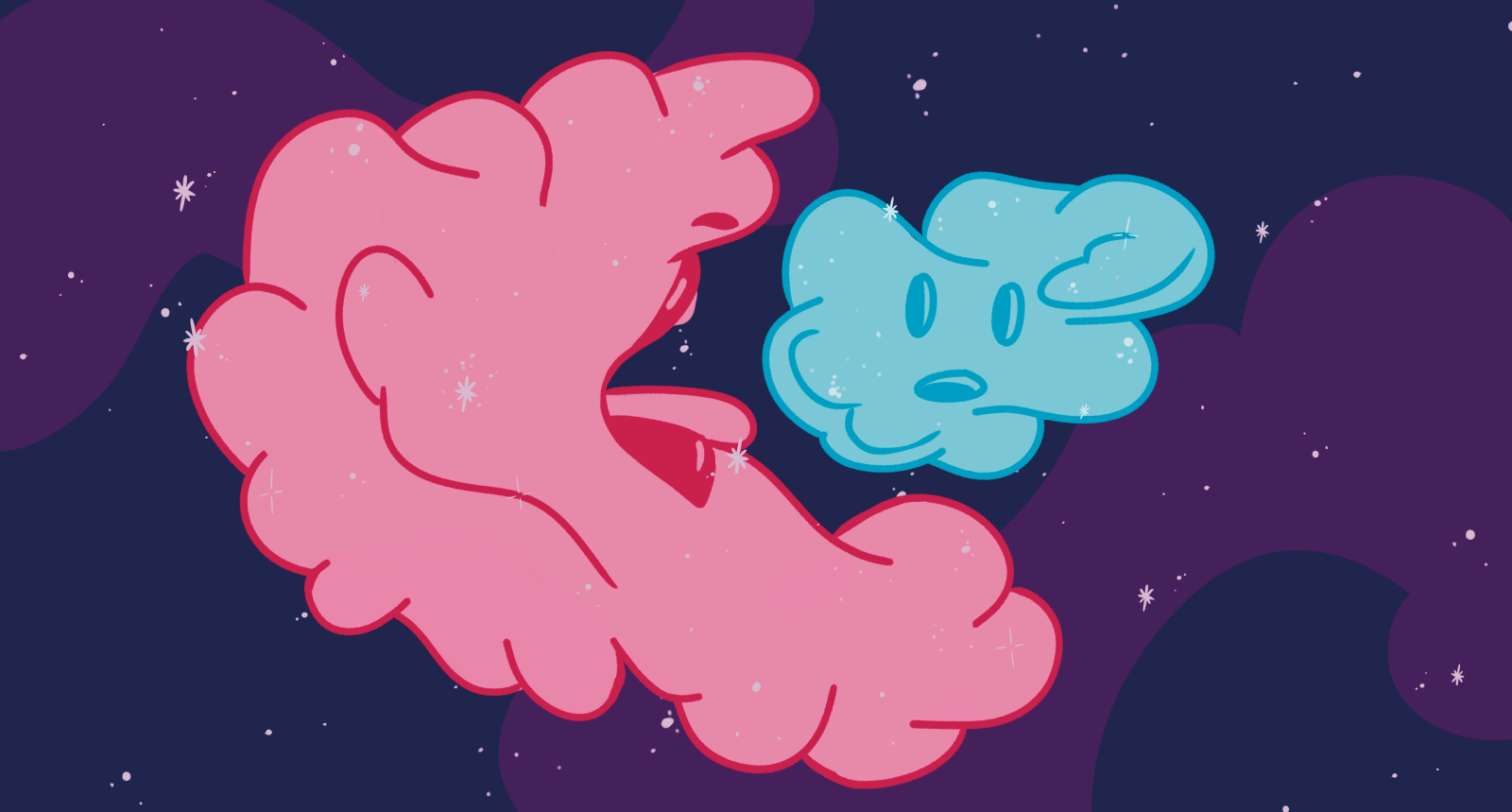Imagine a universe where galaxies—the colossal islands of stars numbering in trillions—are not just majestic neighbors but are also ravenous predators. This is the reality of galactic cannibalism, a process where a larger galaxy gravitationally rips apart and absorbs a smaller one, forever altering the celestial landscape.
One of the most significant mysteries in astronomy is the process of galaxy formation. The hierarchical merger model of galaxy creation is one way researchers explain how galaxies form. According to this model, when galaxies of the same size crash into each other, they join together.
However, unlike when two galaxies of the same size merge to form a new galaxy, we have seen something very interesting when different-sized galaxies collide.
It has been found that the bigger galaxy will “eat” or “cannibalize” the smaller one. The big galaxy will tear the small galaxy apart, taking in all of its stars, dark matter and energy and leaving behind a trail of stardust. This strange kind of cannibalism is quite common across the universe.
Jim Todd—the Director of Space Science Education at the Oregon Museum of Science and Industry and a Portland State alumnus—explained how galactic cannibalism “is a common occurrence in the 13.8-billion-year history of our universe.”
“Galaxies, bound by gravity’s invisible strings, are constantly on the move,” Todd said. “When two galaxies get too close, the larger one’s immense gravitational pull begins to steal gas, dust and even stars from the smaller one, slowly devouring it over millions or even billions of years. This process can trigger bursts of star formation as the stolen material gets compressed, creating a cosmic firework display.”
Our own galaxy, the Milky Way, is no stranger to this galactic cannibalism. “Our Milky Way is currently consuming the Magellanic Clouds that are close to us, both the small and larger clouds,” said William Blackmore, PSU Alumnus and Planetarium Director and Astronomy Instructor at Mt. Hood Community College. The streams of gas and dust linking us to these celestial morsels are a testament to this ongoing galactic feast.
However, what happens to the galaxies involved in this cosmic clash? Kevin Davis, Planetarium Manager at Eugene Science Center, explained how “the larger galaxy usually retains its dominant structure, while the smaller one gets torn apart and its stars become part of the bigger galactic body.” This galactic digestion also reshapes the larger galaxy, transforming a majestic spiral galaxy such as ours into a more elliptical one.
Understanding galactic cannibalism is an ongoing quest for astronomers. With advancements in technology, our ability to peer into the depths of space is constantly improving.
Telescopes, such as Hubble and the newly-launched James Webb Space Telescope, provide unprecedented views of galaxies undergoing this cosmic ballet. As Davis highlighted, these observations reveal evidence of binary black hole mergers, further solidifying our understanding of these galactic collisions.
NGC 474 is a galaxy showcasing the characteristics of galactic cannibalism with its distinctly shell-like appearance. Todd mentioned the captivating Tadpole Galaxy, visible through the lens of the Hubble telescope, exemplifies the slow-motion dance of galactic cannibalism played out over millions of years.
“But you have to keep in mind, this is a very different timescale than what we [are on] are as humans,” Todd said. “We live by the minutes and the hours. These galaxy collisions occurred over millions and billions of years. It’s super slow-mo, but it’s happening.”
Two smaller galaxies, called Sagittarius Dwarf and Canis Major Dwarf, were shredded by the Milky Way galaxy. “It’s really torn apart,” Todd said. “There’s really nothing really left of those galaxies, but we see them in the background in the recent discovery.”
We know this because they’re moving in a different direction than the Milky Way. “They’re a different age, different makeup,” Todd said. “However, mainly their motion is going in a different direction than we are.”
The study of galactic cannibalism is not just about understanding the past. It also holds clues about our future. The Milky Way is on a collision course with the Andromeda galaxy, another galactic behemoth. Though this celestial head-on won’t occur for another five billion years, it serves as a stark reminder of our universe’s dynamic—and sometimes violent—nature.
Don’t lose any sleep, joked Todd. “It’s just that we’re basically going to pass through each other,” he said. “But we’re going to do a slow dance around each other. At that point, the sun will be gone. The solar system will be gone. There’s nothing left for us to watch at that time period. That’s a scary thought, but that’s the way the universe works.” The halo of the two galaxies has already merged now, but they’re so transparent that we can’t see the boundary.
The fascinating thing about galactic cannibalism is that it is a rich ground for new stars being born. What’s often referred to as starburst galaxies is all that dust, gas and material in the galaxies running into each other are being compressed by the shockwaves. The observations by Chandra—an X-ray observatory by NASA—are playing an important role in understanding starburst galaxies.
“Forget the image of stars gracefully orbiting around a galactic center. Instead, picture the arms of a spiral galaxy as a standing wave, a traffic jam of cosmic material constantly stirred by exploding stars [or supernovae],” Blackmore said. “These shockwaves compress dust and gas, triggering bursts of new star formation within the arms.”
While stars and gas move within the galaxy, they aren’t actually traveling along the arms. “Think of it like cars navigating a traffic jam,” Blackmore said. “They’re not going anywhere fast, but the jam itself isn’t moving either.”
“Another common misconception [is] our Milky Way’s appearance,” Blackmore said. “Since we’re inside it, we don’t have a direct picture,” he said. “Those textbook images are actually educated guesses, based on other galaxies and our own internal mapping. It would take hundreds of thousands of years to capture a true image from far enough away.”
As we continue to explore the cosmos, galactic cannibalism remains a captivating area of research, filled with unanswered questions and hidden secrets. As galaxies devour other galaxies, the matter they accrue allows them to forge new suns. So basically, everything we are is due to an ancient act of galactic cannibalism. So, the next time you gaze up at the night sky, remember that the serene beauty you witness may be hiding a tale of conquest—a cosmic dance where galaxies rise and fall, devoured by their grander neighbors.





